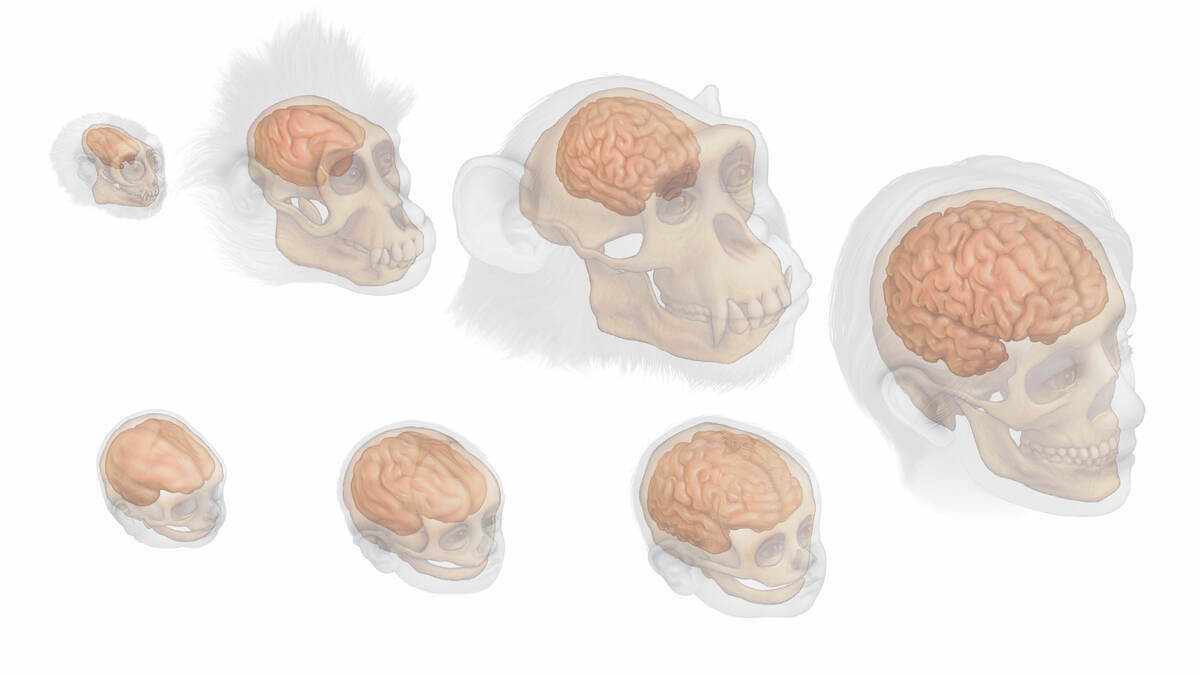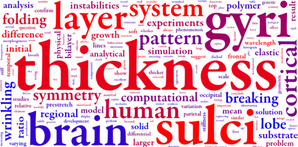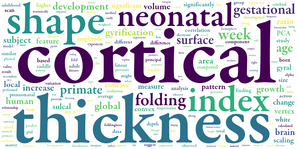Ontogeny and phylogeny in brain folding

In adults, cortical thickness varies locally from 1 to nearly 5mm. How do those differences emerge throughout development? How similar are these patterns to non-human primates and other mammals?
We have shown that cortical thickness in gyri and sulci diverge during the early years of postnatal development (Holland et al. 2020), and we are currently investigating these changes during in utero development. To complement this research, we are also studying the patterns of cortical folding and thickness across mammalian phylogeny, starting with primates. In our preliminary analysis of 12 primate species (Demirci et al. 2023), we found similar qualitative patterns of thickness - where the most sulcal regions are the thinnest, and the most gyral regions are the thickest. Quantitatively, our results matched our predictions from numerical simulations (Holland et al. 2018) - the difference between the thickest and thinnest regions increased as brain size and foldedness increased. In the future, we plan to study many more species, including both additional primates and other mammals.

Holland MA, Budday S, Goriely A, Kuhl E (2018) "Symmetry Breaking in Wrinkling Patterns: Gyri Are Universally Thicker than Sulci." Physical Review Letters

Holland MA, Budday S, Li G, Shen D, Goriely A, Kuhl E (2020) "Folding drives cortical thickness variations." European Physical Journal Special Topics
(DOI)

Demirci N, Hoffman ME, Holland MA (2023) "Systematic cortical thickness patterns in primates suggest a universal physical law of folding." Neuroimage

Demirci N & Holland MA (2024) "Scaling patterns of cortical folding and thickness in early human brain development in comparison to primates." Cerebral Cortex
(DOI) (code and data)
This work is supported by an NSF CAREER award (Unfolding the Cortex: Biomechanics-informed Analysis of Cortical Thickness).
